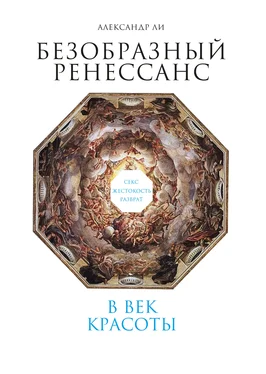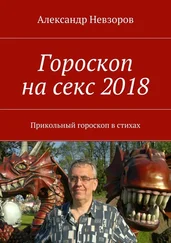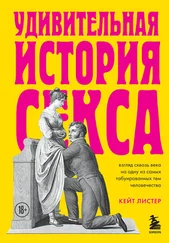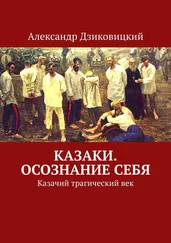Hudson H., «The Politics of War: Paolo Uccellos Equestrian Monument for Sir John Hawkwood In the Cathedral of Florence», Parergon 23/2 (2006): 1-28.
Hunt E. S., The Medieval Super-Companies: A Study of the Peruzzi Company of Florence (Cambridge, 1994).
Hunt E. S., and J. M. Murray, A History of Business In Medieval Europe, 1200–1500 (Cambridge, 1999).
Hyatte R., The Arts of Friendship. The Idealization of Friendship In Medieval and Early Renaissance Literature (Leiden, 1994).
Hyde J. К., Society and Politics In Medieval Italy. The Evolution of the Civil Life, 1000–1350 (London, 1973).
Ianziti G., Writing History In Renaissance Italy. Leonardo Bruni and the Uses of the Past (Cambridge MA and London, 2012).
Jack M. A., «The Accademia del Disegno In Late Renaissance Florence», Sixteenth Century lournal 7/2 (1976): 3-20.
Jardine L., and J. Brotton, Global Interests: Renaissance Art between East and West (London, 2000).
Jones P. J., «Communes and despots; the city state In late-medieval Italy», Transactions of the Royal Historical Society 5th ser., 15 (1965): 71-96
Jones P. J., The Italian City-State: From Commune to Signoria (Oxford, 1997).
Jones P. J., The Malatesta of Rimini and the Papal State (Cambridge, 1974).
Jones P. J., «The Vicariate of the Malatesta of Rimini», English Historical Review 67/264 (1952): 321–351.
Jones R., and N. Penny, Raphael (New Haven and London, 1983).
Jordan M. D., The Silence of Sodom: Homosexuality In Modern Catholicism (Chicago, 2000).
Kaplan P. H. D., «Isabella d’Este and black African women», In Earle and Lowe, eds., Black Africans In Renaissance Europe , 125-54.
Kaplan P. H. D., The Rise of the Black Magus In Western Art (Ann Arbor, 1985).
Katz D. E., «The Contours of Tolerance: Jews and the Corpus Domini Altarpiece In Urbino», Art Bulletin 85/4 (2003): 646–661.
Katz D. E., The Jew In the Art of the Italian Renaissance (Philadelphia, 2008).
Kempers B., Painting, Power and Patronage. The Rise of the Professional Artist In Renaissance Italy, trans. B. Jackson (London, 1994).
Kent D., Cosimo de Medici and the Florentine Renaissance (New Haven, 2000).
KentD., «The Florentine Reggimento In the Fifteenth Century», Renaissance Quarterly 28/4 (1975): 575–638.
Kent D., «The Lodging House of All Memories»: An Accountants Home In Renaissance Florence», Journal of the Society of Architectural Historians 66/4 (2007): 444-63.
Kent D., The Rise of the Medici: Faction In Florence, 1426–1434 (Oxford, 1978).
Kent F. W., «Individuals and Families as Patrons of Culture In Quattrocento Florence», In A. Brown, ed., Language and Images of Renaissance Italy (Oxford, 1995), 171-92.
KingD., and D. Sylvester, eds., The Eastern Carpet In the Western World from the 15th to the 17th Century (London, 1983).
Kirshner J., «Family and marriage: a socio-legal perspective», In Najemy, ed., Italy In the Age of the Renaissance , 82-102.
Klapisch-Zuber C, «Women servants In Florence (fourteenth and fifteenth centuries)», In B. Hanawalt, ed., Women and Work In Preindustrial Europe (Bloomington, 1986), 56–80.
Knox G., «The Colleoni Chapel In Bergamo and the Politics of Urban Space», Journal of the Society of Architectural Historians 60/3 (2001): 290–309.
Kristeller P. O., Renaissance Thought and the Arts , new ed. (Princeton, 1990).
La Ronciere, C. – M. de, «Poveri e poverta a Firenze nel XIV secolo», In C. – M. de la Ronciere, G. Cherubini, and G. Barone, eds., Trapreghiera e rivolta: le folle foscane nel XIV secolo (Rome, 1993), 197–281.
Laclotte M., and D. Thiebaut, Lecole dAvignon (Tours, 1983).
Lambert M. D., Franciscan Poverty. The Doctrine of the Absolute Poverty of Christ and the Apostles In the Franciscan Order, 1210–1323 (London, 1961).
Landauer C., «Erwin Panofsky and the Renascence of the Renaissance», Renaissance Quarterly 47/1 (1994): 255-81.
Larner J., Culture and Society In Italy, 1290–1420 (London, 1971).
Le GoffJ., The Birth of Purgatory, trans. A. Goldhammer (Chicago, 1984).
Leader A., The Badia of Florence: Art and Observance In a Renaissance Monastery (Bloomington and Indianapolis, 2012).
Lee A., «Petrarch, Rome, and the «Dark Ages», In P. Prebys, ed., Early Modern Rome, 1341–1667 (Ferrara, 2012), 9-26.
Lee A., Petrarch and St. Augustine: Classical Scholarship, Christian Theology, and the Origins of the Renaissance In Italy (Leiden, 2012).
Lee R. W., «Ut Pictura Poesis: The Humanistic Theory of Painting», Art Bulletin 22/4 (1940): 197–269.
Leoncini G., Fa certosa di Firenze nei suoi rapporti con Yarchitettura certosina (Salzburg, 1980).
Lestringant E, Mapping the Renaissance World (Berkeley, 1994).
Liebert R. S., Michelangelo: A Psychoanalytic Study of His Fife and Images (New Haven, 1983).
Lightbown R. A., Sandro Botticelli, 2 vols. (London, 1978).
Lindow J. R., The Renaissance Palace In Florence: Magnificence and Splendour In Fifteenth-Century Italy (London, 2007).
Lowe K., «Representing» Africa: Ambassadors and Princes from Christian Africa to Italy and Portugal, 1402–1608», Transactions of the Royal Historical Society 6/17 (2007): 101-28.
Lowe К., «The stereotyping of black Africans In Renaissance Europe», In Earle and Lowe, eds., Black Africans In Renaissance Europe , 17–47.
Lubkin G., A Renaissance Court: Milan under Galleazzo Maria Sforza (Berkeley, Los Angeles, and London, 1994).
Mack C. R., Review of The Aesthetics of Renaissance Art: A Reconsideration of Style by H. Wohl, Renaissance Quarterely 53/2 (2000): 569-71.
MackR. E., Bazaar to Piazza: Islamic Trade and Italian Art, 1300–1600 (Berkeley and London, 2002).
Mackenney R., Renaissances. The Cultures of Italy, C.1300-C.1600 (Houndmills, 2005).
Maggi A., «On Kissing and Sighing: Renaissance Homoerotic Love from Ficinos De amore and Sopra Lo Amore to Cesare Trevisanis L’impresa (1569)», Journal of Homosexuality 49/3-4 (2005): 315–339.
Maginnis H. B. J., The World of the Early Sienese Painter (Philadelphia, 2001).
Magnuson T., «The Project of Nicholas V for Rebuilding the Borgo Leonino In Rome», Art Bulletin 36/2 (1954): 89-115.
Mallett M., Mercenaries and their Masters: Warfare In Renaissance Italy, new ed. (Barnsley, 2009).
Mann N., Petrarch (Oxford, 1984).
Marchini G., Filippo Lippi (Milan, 1975).
Mariani L. M., San Benedetto da Palermo, II того Etiope, nato a S. Fratello (Palermo, 1989).
Martindale A., Simone Martini (Oxford, 1988).
Martindale A., The Rise of the Artist In the Middle Ages and Early Renaissance (London, 1972).
Martines L., April Blood: Florence and the Plot Against the Medici (London and New York, 2003).
Martines L., Power and Imagination. City-States In Renaissance Italy (London, 1980).
Martines L., Scourge and Fire. Savonarola and Renaissance Italy (London, 2007).
Martines L., The Social World of the Florentine Humanists, 1390–1460 (Princeton, 1963).
Mayer E., Un umanista Italiano della corte di Mattia Corvino, Aurelio Brandolino hippo (Rome, 1938).
McLaughlin M. L., «Humanist concepts of Renaissance and Middle Ages In the tre-and quattrocento», Renaissance Studies 2 (1988): 131–142.
Читать дальше
Конец ознакомительного отрывка
Купить книгу




![Александр Бадак - Всемирная история в 24 томах. Т.1. Каменный век [гнусная калибрятина]](/books/401178/aleksandr-badak-vsemirnaya-istoriya-v-24-tomah-t-1-thumb.webp)







